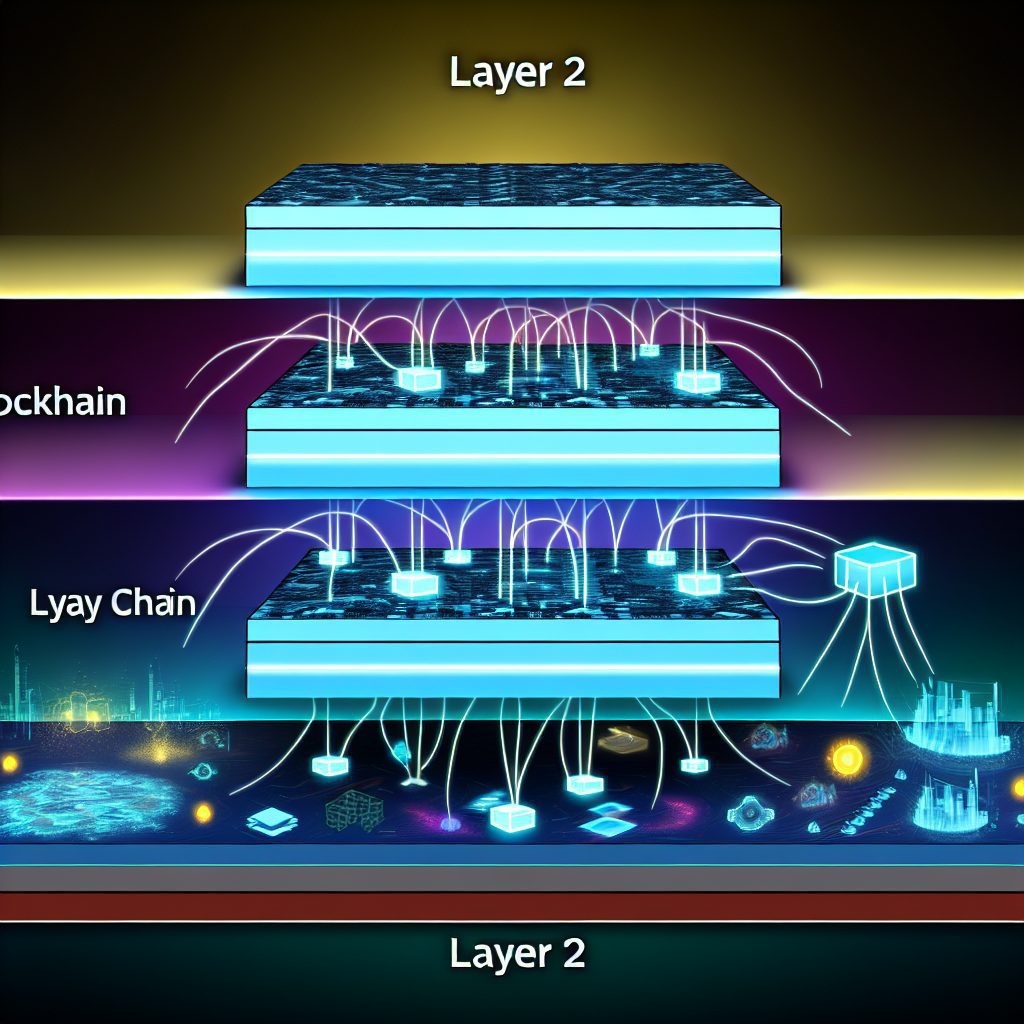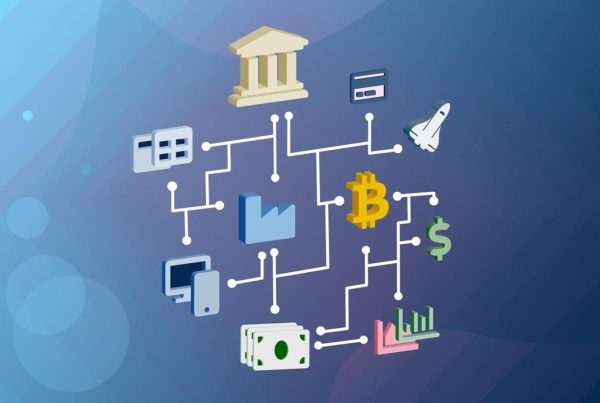Layer 2 Explained: Scaling Blockchain for the Future
The cryptocurrency industry has witnessed exponential growth over the past decade, with blockchain technology at its core. However, as more users engage with decentralized applications (dApps) and transactions, the limitations of Layer 1 blockchains have become increasingly apparent. This is where Layer 2 solutions come into play, offering innovative ways to enhance scalability, reduce costs, and improve transaction speeds. In this article, we will delve into the intricacies of Layer 2 solutions, their significance in the blockchain ecosystem, and how they are shaping the future of cryptocurrency.
Understanding Layer 1 vs. Layer 2
To grasp the concept of Layer 2, it is essential to first understand what Layer 1 entails. Layer 1 refers to the base layer of a blockchain network, which includes the main protocol and its underlying architecture. Examples of Layer 1 blockchains include Bitcoin, Ethereum, and Binance Smart Chain. These networks are responsible for processing transactions, maintaining security, and ensuring consensus among participants.
However, as the number of users and transactions increases, Layer 1 blockchains often face challenges such as:
- Scalability: Limited transaction throughput can lead to congestion.
- High Fees: Increased demand can drive up transaction costs.
- Slow Confirmation Times: Users may experience delays in transaction processing.
Layer 2 solutions address these challenges by building on top of Layer 1 blockchains. They enable faster and cheaper transactions while maintaining the security and decentralization of the underlying network.
What Are Layer 2 Solutions?
Layer 2 solutions are secondary frameworks or protocols that operate on top of a Layer 1 blockchain. They facilitate off-chain transactions, allowing users to conduct operations without congesting the main blockchain. This approach significantly enhances the scalability of blockchain networks.
Some of the most prominent Layer 2 solutions include:

- State Channels: These allow participants to conduct multiple transactions off-chain and only settle the final state on the main blockchain.
- Plasma: A framework that enables the creation of child chains, which can process transactions independently before finalizing them on the main chain.
- Rollups: These bundle multiple transactions into a single one, reducing the amount of data that needs to be processed on the Layer 1 blockchain.
- Sidechains: Independent blockchains that run parallel to the main chain and can interact with it, allowing for greater flexibility and scalability.
The Importance of Layer 2 Solutions
Layer 2 solutions are crucial for the future of blockchain technology for several reasons:
- Enhanced Scalability: By offloading transactions from the main chain, Layer 2 solutions can significantly increase the number of transactions processed per second (TPS).
- Lower Transaction Costs: With fewer transactions on the main chain, users can enjoy reduced fees, making blockchain technology more accessible.
- Improved User Experience: Faster transaction times lead to a smoother experience for users, encouraging wider adoption of blockchain applications.
- Interoperability: Layer 2 solutions can facilitate communication between different blockchains, promoting a more interconnected ecosystem.
Types of Layer 2 Solutions
State Channels
State channels are a popular Layer 2 solution that allows participants to conduct transactions off-chain. They work by creating a private channel between two or more parties, enabling them to exchange multiple transactions without involving the main blockchain until the channel is closed.
For example, the Lightning Network is a state channel solution built on Bitcoin. It allows users to make instant payments without waiting for block confirmations, significantly enhancing the speed and efficiency of transactions.
Plasma
Plasma is another Layer 2 solution that enables the creation of child chains. These child chains can process transactions independently and periodically submit their final state to the main blockchain. This approach allows for greater scalability while maintaining the security of the main chain.
One notable implementation of Plasma is the OMG Network, which aims to improve Ethereum’s scalability by allowing users to conduct transactions off-chain and settle them on the Ethereum mainnet.
Rollups
Rollups are a Layer 2 solution that aggregates multiple transactions into a single batch, which is then submitted to the main blockchain. This method reduces the amount of data that needs to be processed on the Layer 1 chain, leading to lower fees and faster transaction times.
There are two main types of rollups:
- ZK-Rollups: Utilize zero-knowledge proofs to ensure the validity of transactions without revealing sensitive information.
- Optimistic Rollups: Assume that transactions are valid by default and only verify them if a dispute arises.
Projects like Arbitrum and zkSync are leading the way in implementing rollup technology on Ethereum, showcasing its potential to enhance scalability.
Sidechains
Sidechains are independent blockchains that run parallel to a main blockchain. They can interact with the main chain, allowing for the transfer of assets and data between the two. Sidechains provide flexibility and scalability, as they can be optimized for specific use cases without affecting the main chain’s performance.
An example of a sidechain is the Liquid Network, which is designed to facilitate faster Bitcoin transactions and enable features like confidential transactions.
Real-World Applications of Layer 2 Solutions
Layer 2 solutions have already begun to transform various sectors by enhancing the capabilities of blockchain technology. Here are some notable applications:
Decentralized Finance (DeFi)
The DeFi sector has experienced explosive growth, with Layer 2 solutions playing a pivotal role in its scalability. Platforms like Uniswap and Aave have integrated Layer 2 solutions to reduce transaction costs and improve user experience. For instance, Uniswap’s deployment on Optimism allows users to trade tokens with significantly lower fees compared to the Ethereum mainnet.
Gaming and Non-Fungible Tokens (NFTs)
Layer 2 solutions are also making waves in the gaming and NFT space. Games like Axie Infinity utilize sidechains to facilitate fast and cost-effective transactions, enabling players to buy, sell, and trade in-game assets seamlessly. Similarly, NFT marketplaces are leveraging Layer 2 solutions to reduce gas fees, making it more affordable for artists and collectors to mint and trade NFTs.
Supply Chain Management
Blockchain technology is increasingly being adopted in supply chain management to enhance transparency and traceability. Layer 2 solutions can improve the efficiency of these systems by enabling real-time tracking of goods without overwhelming the main blockchain. Projects like VeChain are exploring Layer 2 capabilities to optimize supply chain processes.
Challenges and Limitations of Layer 2 Solutions
While Layer 2 solutions offer numerous benefits, they are not without challenges:
- Complexity: Implementing Layer 2 solutions can be technically complex, requiring developers to navigate various protocols and frameworks.
- Security Concerns: While Layer 2 solutions aim to maintain security, they introduce new attack vectors that need to be addressed.
- Interoperability Issues: Different Layer 2 solutions may not be compatible with each other, leading to fragmentation in the ecosystem.
The Future of Layer 2 Solutions
The future of Layer 2 solutions looks promising as the demand for scalable blockchain solutions continues to grow. As more projects adopt Layer 2 technologies, we can expect:
- Increased Adoption: More dApps and platforms will integrate Layer 2 solutions to enhance user experience and reduce costs.
- Interoperability Standards: Efforts to create standards for interoperability between different Layer 2 solutions will likely gain traction.
- Innovative Use Cases: As Layer 2 solutions mature, new use cases will emerge across various industries, from finance to healthcare.
FAQs about Layer 2 Solutions
What is the primary purpose of Layer 2 solutions?
The primary purpose of Layer 2 solutions is to enhance the scalability of blockchain networks by enabling faster and cheaper transactions while maintaining security and decentralization.
How do Layer 2 solutions improve transaction speeds?
Layer 2 solutions improve transaction speeds by processing transactions off-chain or bundling multiple transactions into a single one, reducing congestion on the main blockchain.
Are Layer 2 solutions secure?
While Layer 2 solutions aim to maintain security, they introduce new risks and vulnerabilities. It is essential for developers to implement robust security measures to mitigate these risks.
Can Layer 2 solutions work with any blockchain?
Layer 2 solutions are typically designed for specific Layer 1 blockchains. However, interoperability efforts are underway to enable communication between different Layer 1 and Layer 2 networks.
What are some popular Layer 2 solutions currently in use?
Some popular Layer 2 solutions include the Lightning Network (Bitcoin), Optimism and Arbitrum (Ethereum), and the Liquid Network (Bitcoin).
Conclusion
Layer 2 solutions represent a significant advancement in the quest for scalable blockchain technology. By addressing the limitations of Layer 1 blockchains, these solutions pave the way for a more efficient, cost-effective, and user-friendly cryptocurrency ecosystem. As the industry continues to evolve, the adoption of Layer 2 technologies will play a crucial role in shaping the future of blockchain applications across various sectors.
For further reading on Layer 2 solutions and their impact on the cryptocurrency landscape, consider exploring resources from CoinDesk, The Block, and CoinTelegraph.
The Crypto Watchlist of the Week 🔎
Subscribe to receive expert-curated projects with real potential—plus trends, risks, and insights that matter. Get handpicked crypto projects, deep analysis & market updates delivered to you.

